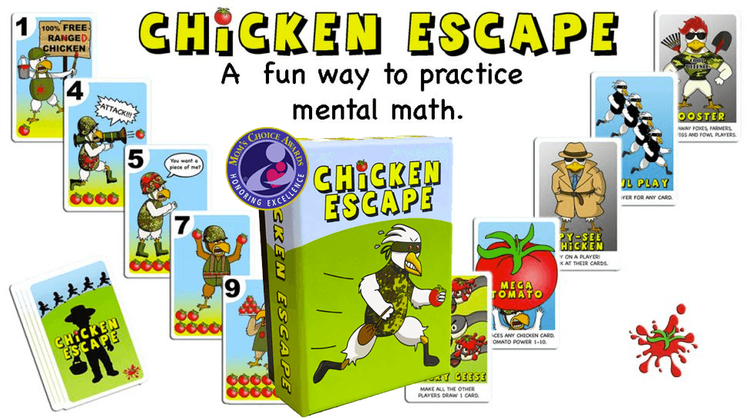Ok, let’s play some Crazy Bingo. We named it that because when we play it everyone kind of goes crazy with excitement.
This is a simple game that can be adjusted for lower and higher grades.
Ages 5 and up
For this game, you need
- A dice 6,10 or 12 sides.
- Piece of paper for each player.
- Writing pencil for each player
- Color crayon for each player (color doesn’t matter)
Set up example (grades 4 and up)
On the dice (12 faces dice for this example) you write the following options: (if you are using a plastic one then assign each one of these options to a number on the dice.
Learn how to build your own blank 6,10 and 12 face dice here.
- odd number
- even number
- multiple of 3
- multiple of 4
- multiple of 5
- multiple of 6
- multiple of 8
- multiple of 9
- multiple of 10
- digits add to 10
- prime number
- square number
Each player writes 12 numbers 1-100 on their paper using the writing pencil (grey). Show/tell the players what the dice roll indications are so they can decide their number based on that.
Play
The players take turns rolling the dice. They announce the dice roll and all the players have to find a number on their paper that matches that roll and circle it with their color crayon. For example, if the dice rolled multiple of 3 the players circle a multiple of 3 on their paper (if they have one). The players cannot change their numbers (that is why we use a pencil for the numbers and color crayon for the circles.)

The first player to circle 6 of their numbers shouts bingo! and is the winner. Then you can continue for a full house, the player that circles all 12 numbers.
I played this game in a zoom meeting with students 3/4 and it worked really well. Give examples and explain what kind of number matches the dice roll after every roll to help the students. For example if the dice says multiple of 6, remind them the table of 6. This is a good way to review the time tables and more.
These options (for the rolls) are good for grades 4 and up. You might want to have a multiplication table handy for children who need to use it and mark the only prime numbers on it. You can replace some of the options with others, use a 10-face dice and practice only multiples, or use a 6-face dice with fewer options.
For lower grades, you can adjust the level like this.
- The numbers the players write on their paper could be 1-20, or 1-50
- You can use a 6 or 10-face dice and select from these options for the dice roll. (write them on the dice or assign them to the dice numbers.)
Learn how to build your own blank 6,10 and 12 face dice here.
- Odd number
- Even number (skip count by 2)
- Digits add to 10
- Digits add to 9
- Less than 10
- Greater than 10
- < 10
- >20
- One-digit number
- Two-digit number
- Zero in the one’s place, only tens, count by 10
- Ends with 5
- and more!
If you are using a plastic dice and you are assigning options for each number on the dice, for example, rolling 1 means odd number, 3 means less than 20, and so on, it is a good idea to write it on a paper as well for everyone to see and to remember.
Strategy
Every time the players need to choose one of their numbers to circle. (if they have a matching one). If for example, the dice says multiple of 3 they might have to choose between 3, 12 or 60. Now 3 is also a prime number so they can save it for that roll. However 12 is a multiple of 2,3,4,6, so is a good number to keep for later. Of course, luck has the last word in this game. However, the players need to calculate based on probability. Depending on the decided dice roll options the players need to make a strategy, when circling their numbers and when writing their numbers. Even the younger players will figure out that “maybe it’s better that I have numbers less and greater than 20, or I should add some numbers with zero in the ones.”
Learning opportunities:
A lot of discussions about numbers might happen while playing this game. Discussions about multiples, tens and ones, odd and even numbers and more. This will give parents and teachers the opportunity to clear misconceptions and remind important concepts.
When writing their numbers the students calculate which ones will give them better chances of winning so they think about multiples, divisibility, and more.
In the classroom
To be sure that all students choose a correct number from their paper each time you can ask the students to announce their number. This works in small groups but it is difficult if you are playing this game with the whole class. In that case, the students can play as pairs or groups (one paper per the pair or group). Ask the students to note next to each number what they used it for. For example, write “odd” next to the number they used as odd. Then it will be easier to check if they really won.
We hope that you enjoy this game. Please share any thoughts or variations you thought of.













